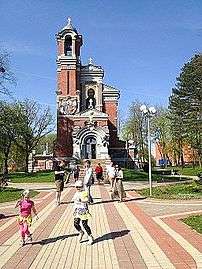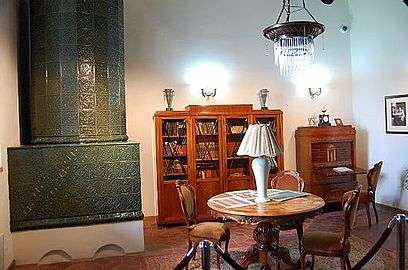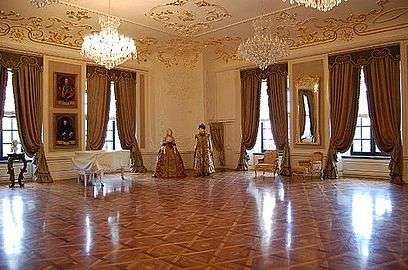Mir Castle Complex
| UNESCO World Heritage site | |
|---|---|
|
| |
| Location | Mir, Belarus |
| Criteria | Cultural: ii, iv |
| Reference | 625 |
| Inscription | 2000 (24th Session) |
| Area | 27 ha |
| Website |
mirzamak |
| Coordinates | 53°27′4.46″N 26°28′22.80″E / 53.4512389°N 26.4730000°ECoordinates: 53°27′4.46″N 26°28′22.80″E / 53.4512389°N 26.4730000°E |
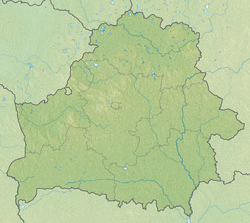 Location of Mir Castle Complex in Belarus | |
The Mir Castle Complex (Belarusian: Мірскі замак, Łacinka: Mirski zamak, Lithuanian: Myriaus pilis, Polish: Zamek w Mirze) is a UNESCO World Heritage site in Belarus.[1] It is in the town of Mir, in the Kareličy District of the Hrodna voblast, at 53°27′4.46″N 26°28′22.80″E / 53.4512389°N 26.4730000°E, 29 kilometres (18 mi) north-west of another World Heritage site, Niasviž Castle. Mir Castle Complex is 164 metres (538 ft) above sea level.
From 1921 to 1939 the castle belonged to the territory of Poland.
History
Duke Juryj Ivanavič Illinič (pl:Jerzy Iwanowicz Ilinicz) began construction of the castle near the village of Mir after the turn of the 16th century in the Belarusian Gothic style. Five towers surrounded the courtyard of the citadel, the walls of which formed a square of 75 metres (246 ft) on each side. In 1568, when the Ilyinich dynasty died out, the Mir Castle passed into the hands of Mikołaj Krzysztof "the Orphan" Radziwiłł, who refitted it with a two-winged, three-story stately residence along the eastern and northern inner walls of the castle. Plastered facades were decorated with limestone portals, plates, balconies and porches in the Renaissance style.
.jpg)
In 1817, after the castle had been abandoned for nearly a century and had suffered severe damage in the Battle of Mir (1812), owner Dominik Hieronim Radziwiłł died of battle injuries and the castle passed to his daughter Stefania, who married Ludwig zu Sayn-Wittgenstein-Berleburg. Later the castle became a possession of their daughter Maria, who married Prince Chlodwig Hohenlohe-Schillingsfürst.
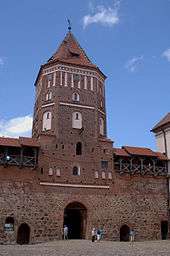
Their son, Maurice Hohenlohe-Schillingsfürst, sold the castle to Mikalaj Sviatapolk-Mirski, of the Bialynia clan, in 1895. Nikolai's son Michael began to rebuild the castle according to the plans of architect Teodor Bursze. The Sviatapolk-Mirski family owned the castle until 1939, when the Soviet Union occupied eastern Poland.
When German forces invaded the Soviet Union in 1941, they occupied the castle and converted it to a ghetto for the local Jewish population, prior to their liquidation. Between 1944 and 1956, the castle was used as a housing facility, resulting in damage to the castle's interior.
In December 2000, the Mir Castle was listed by UNESCO as a World Heritage Site.[2]
Related World Heritage Sites
Gallery
References
- ↑ "21 World Heritage Sites you have probably never heard of". Daily Telegraph.
- ↑ "Landmarks, historic and cultural, and natural sites of the Republic of Belarus on the UNESCO World Heritage List". Land of Ancestors. National Statistical Committee of the Republic of Belarus. 2011. Retrieved 12 October 2013.
External links
| Wikimedia Commons has media related to Mir Castle Complex. |

